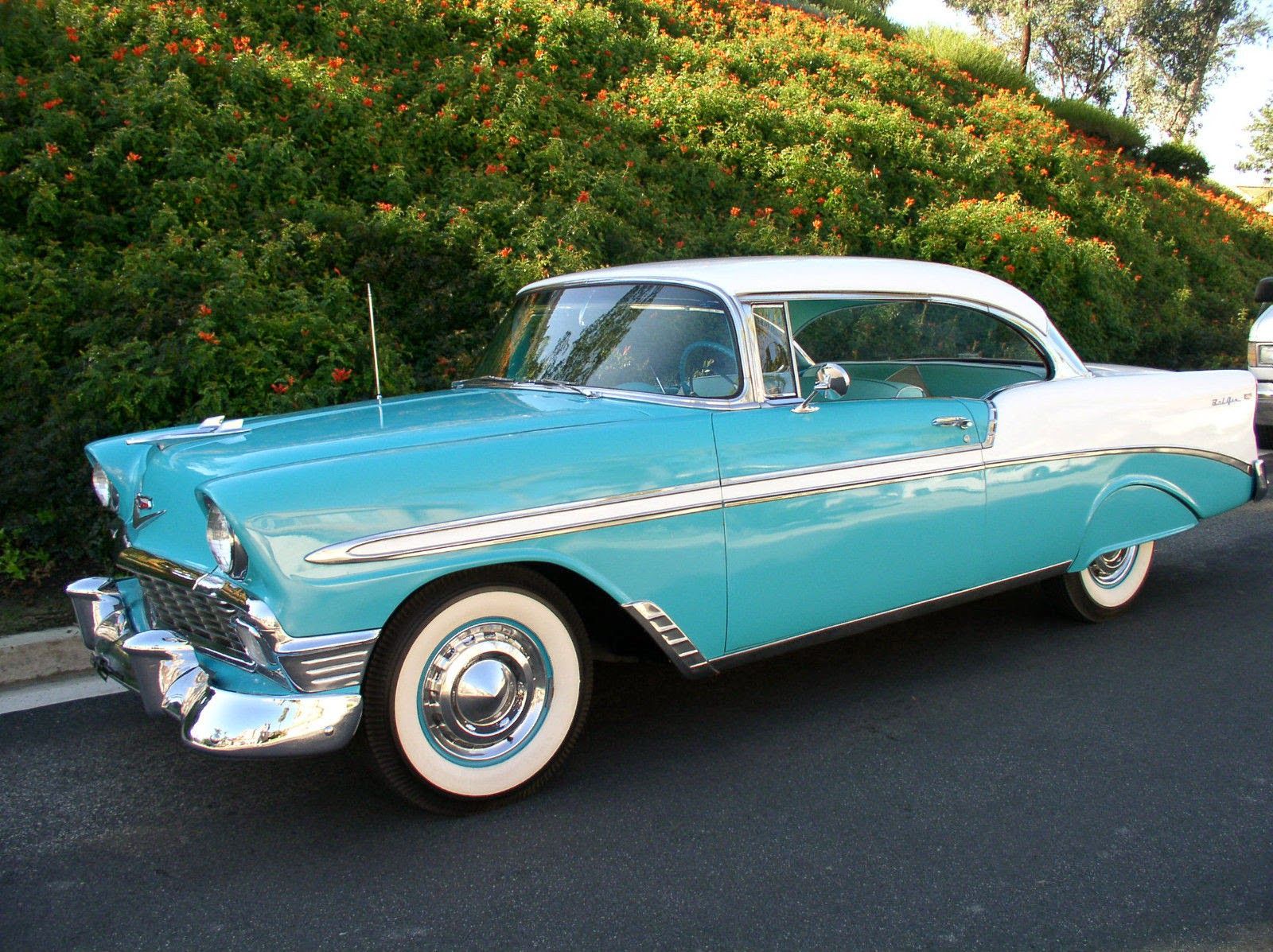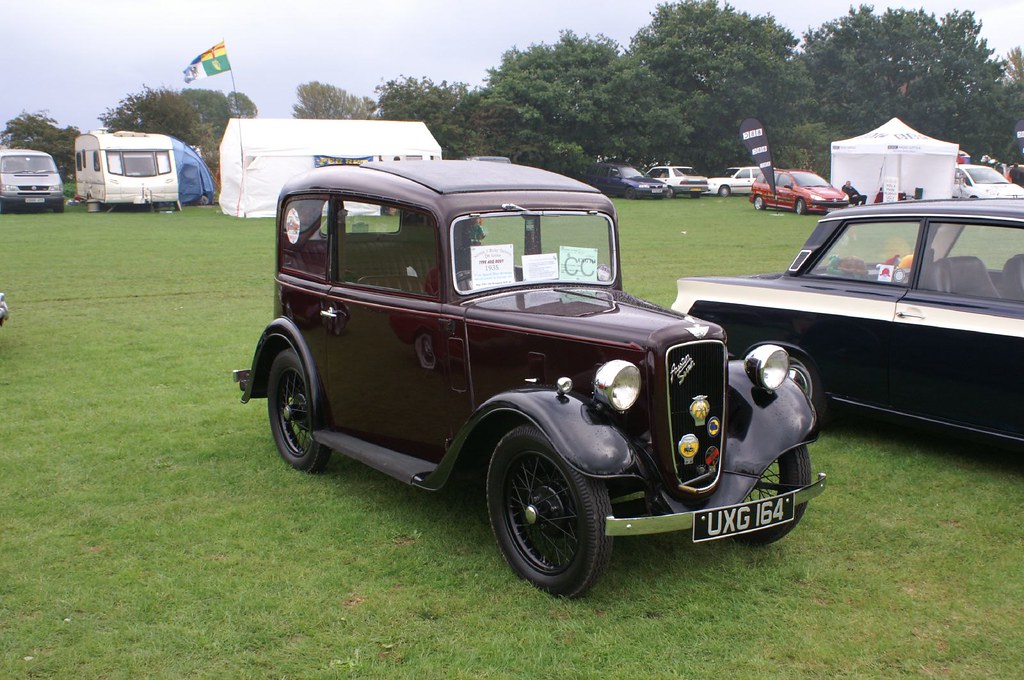
In an ever-shifting economic landscape, marked by frequent job market changes, persistent high inflation rates, and escalating interest rates, the appeal of economy cars has undeniably surged. Many aspiring car buyers are now prudently opting for more affordable vehicles, often setting aside their aspirations for dream cars in favor of practicality and budget considerations. This shift reflects a broader consumer trend towards value and cost-efficiency in daily expenditures, including significant purchases like automobiles.
Car manufacturers, keenly aware of this growing demand, have responded by offering a wide array of small, aesthetically pleasing cars with enticingly low sticker prices. The market is now abundant with selections that, on the surface, promise affordability and modern design. However, a timeless adage often proves true in this segment: “quality comes at a price.” This implies a crucial trade-off: paying less often means compromising on the desired level of quality, leading to potential frustrations down the line.
Indeed, buyer’s remorse can feel particularly heavy when it involves a car, impacting both one’s financial well-being and daily routine. The recurring act of starting the engine each morning can serve as a constant reminder of a decision one wishes had been different. While some vehicles gracefully transition into trusted companions over years of service, others unfortunately evolve into persistent burdens. This article will delve into several such affordable compacts that, despite their initial attractive pricing, are frequently reported to ultimately lead to significant regret for their owners.
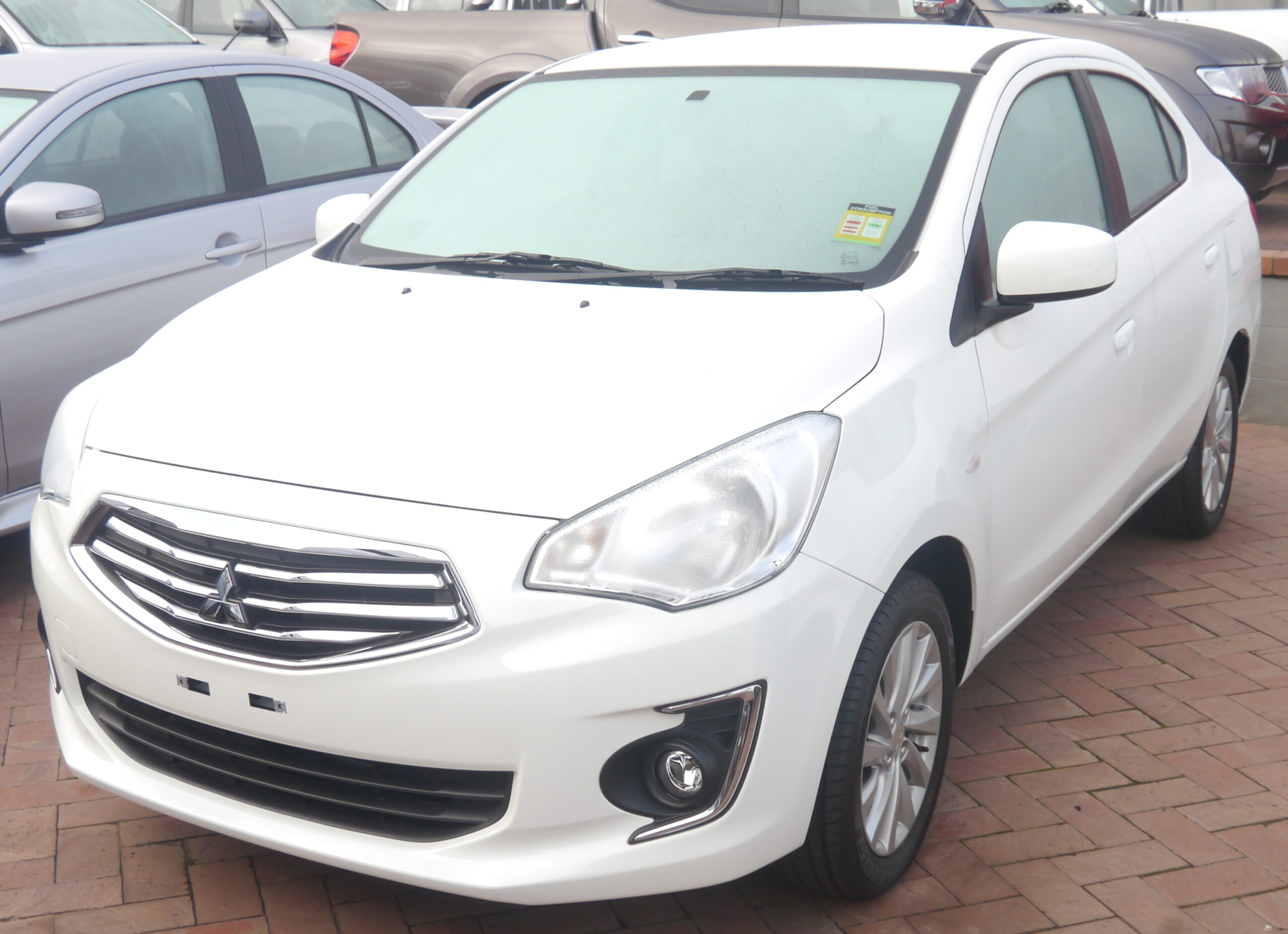
1. **Mitsubishi Mirage**The 2024 Mitsubishi Mirage stands out as one of the most budget-friendly subcompact hatchbacks available, with a starting price of just $16,695, according to Mitsubishi Motors US. This low entry cost makes it an attractive option for buyers prioritizing upfront savings. However, this affordability comes with a notable list of significant drawbacks that often temper the initial excitement of its low price point.
Chief among these concerns is its poor performance, which can leave drivers wanting more from their daily commute. The Mirage is equipped with a naturally aspirated 1.2-liter 3-cylinder engine that generates a mere 78 horsepower. This modest power output translates into leisurely acceleration, with the car taking a full 11 seconds to reach 60 mph from a standstill, a figure that is considerably slower than many rivals in its class.
Beyond its sluggish acceleration, the 2024 Mirage also presents a subpar interior quality experience. The cabin features materials that feel notably cheap to the touch, dominated by hard plastics throughout. Furthermore, the vehicle offers hardly any noteworthy amenities, meaning convenience features that are standard in many other compacts are often absent or only available in higher, more expensive trims. This results in an interior environment that feels basic and uninspired.
Compounding these issues is an underwhelming driving experience. Owners frequently report poor ride quality, with the suspension struggling to absorb road imperfections, leading to a noticeable harshness. Excessive road noise permeates the cabin, further detracting from comfort, while the unrefined engine produces a noisy drone, especially under acceleration. These factors combine to create a driving environment that is less than ideal for prolonged periods or longer journeys.
Car Model Information: 2024 Mitsubishi Mirage RALLIART
Name: Mitsubishi Mirage
Caption: Mitsubishi Mirage (sixth generation)
Manufacturer: Mitsubishi Motors
Production: 1978–2003,2012–present
Class: Subcompact car
Layout: Front-engine, front-wheel-drive
Predecessor: Mitsubishi Lancer (A70)
Successor: Mitsubishi Lancer#Eighth generation (2000)
Categories: 1980s cars, 1990s cars, 2000s cars, 2010s cars, 2020s cars
Summary: The Mitsubishi Mirage is a range of cars produced by the Japanese manufacturer Mitsubishi from 1978 until 2003 and again since. The hatchback models produced between 1978 and 2003 were classified as subcompact cars, while the sedan and station wagon models, marketed prominently as the Mitsubishi Lancer, were the compact offerings. The liftback introduced in 1988 complemented the sedan as an additional compact offering, and the coupé of 1991 fitted in with the subcompact range. The current Mirage model is a subcompact hatchback and sedan and it replaces the Mitsubishi Colt sold between 2002 and 2012.
Get more information about: Mitsubishi Mirage
Buying a high-performing used car >>>
Brand: Mitsubishi Model: Mirage
Price: $17,880 Mileage: 3,542 mi.
Read more about: Navigating the Automotive Landscape: These Car Brands Offer the Best Owner Benefits and Free Maintenance Programs
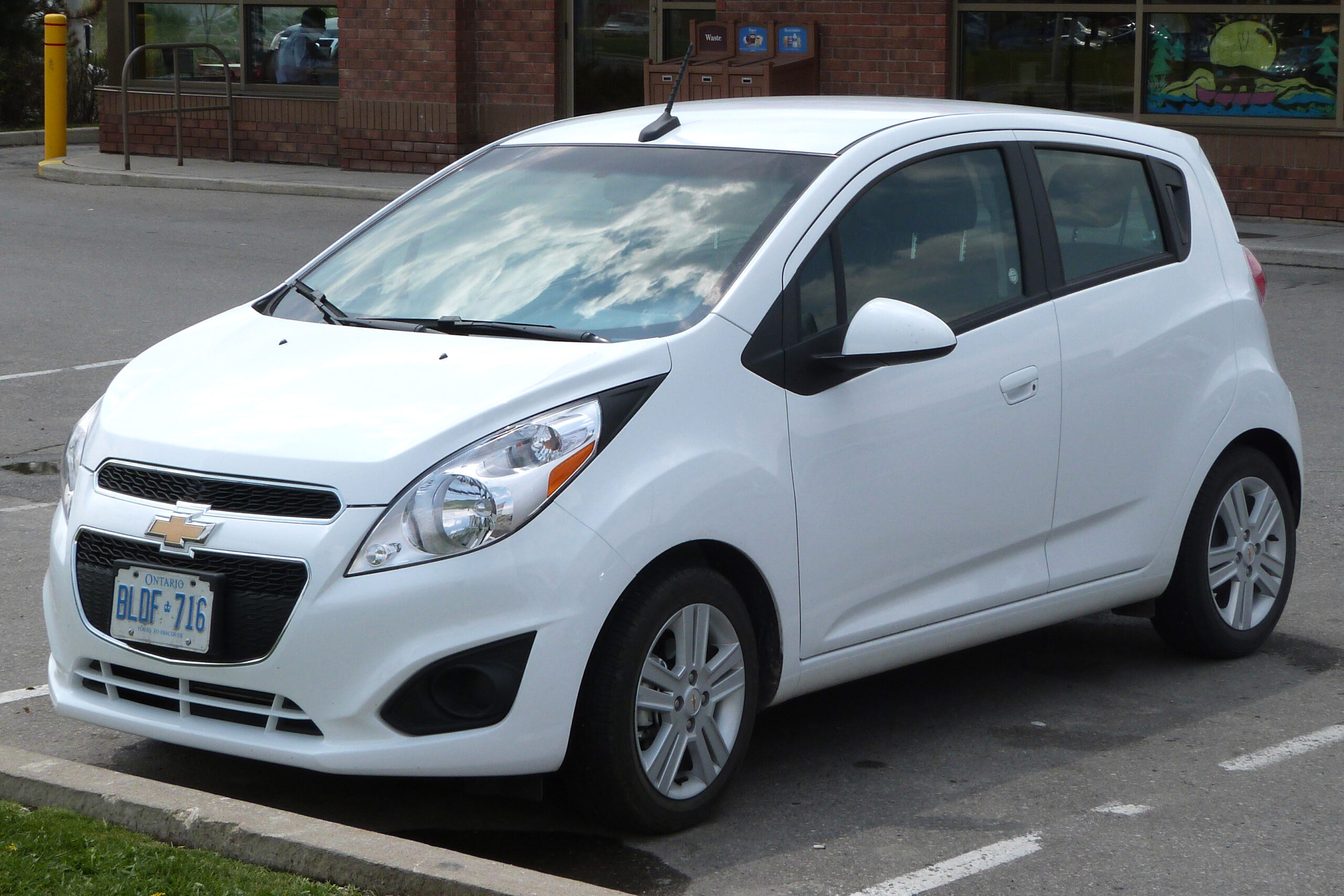
2. **Chevrolet Spark**Although production of the Chevrolet Spark ceased in 2022, it maintains a considerable presence and popularity among consumers searching for small hatchbacks, often found on the used car market. In its final year of production, the Spark’s base trim was priced at an accessible $14,595, positioning it as an ultra-affordable choice for many. However, much like the Mitsubishi Mirage, the Spark’s list of standard amenities is not particularly impressive, often necessitating upgrades for basic comforts.
Many desirable conveniences, such as keyless entry and satellite radio, were typically reserved for the higher trim levels. This meant that buyers seeking even a moderate level of modern features had to contend with a higher price tag than the advertised base model, potentially eroding the car’s initial value proposition. The base models, therefore, offered a very spartan experience.
Under the hood, the Chevrolet Spark houses a 98-hp 1.4-liter 4-cylinder engine, which, despite its displacement, delivers rather poor performance. Drivers should not expect any thrills or responsive acceleration, even when pressing the gas pedal to the floor. The car’s focus was clearly on economy rather than dynamic driving, making it suitable for city commuting but less so for enthusiastic driving or quick maneuvers.
While its combined fuel economy, typically around 33-35 mpg, was generally on par with most of its direct competitors, the Spark’s interior space posed significant limitations. Its cramped cabin, especially in the rear, offered only about 33 inches of legroom. This tight space could leave taller passengers feeling notably squeezed and uncomfortable during rides, underscoring a practical drawback for those who frequently transport multiple occupants.
Car Model Information: 2013 Chevrolet Express 2500 Work Van
Name: Chevrolet Spark
Manufacturer: unbulleted list
Production: 1998–2022
Class: City car
BodyStyle: hatchback
Layout: Front-engine, front-wheel-drive layout
Predecessor: Daewoo Tico
Categories: 2000s cars, 2010s cars, 2020s cars, All articles containing potentially dated statements, All articles with unsourced statements
Summary: The Chevrolet Spark (Korean: 쉐보레 스파크) is a city car manufactured by General Motors’s subsidiary GM Korea from 1998 to 2022. The vehicle was developed by Daewoo and introduced in 1998 as the Daewoo Matiz (Korean: 대우 마티즈). In 2002, General Motors purchased Daewoo Motors, which was marketing the vehicle with several GM marques and nameplates.
The third generation was marketed globally, prominently under the Chevrolet brand in North America as the Chevrolet Spark and in Australia and New Zealand as the Holden Barina Spark. The fourth generation was launched in 2015, known as the Holden Spark in Australia and New Zealand. It also serves as the basis for the Opel Karl in Europe, Vauxhall Viva in the UK, and VinFast Fadil in Vietnam, the latter being manufactured under license.
A limited-production all-electric version, the Chevrolet Spark EV, was released in the U.S. in selected markets in California and Oregon in June 2013. The Spark EV was the first all-electric passenger car marketed by General Motors since the EV1 was discontinued in 1999, and also the first offered for retail sale by GM (the EV1 was available only on lease).
In the South Korean market, the Spark complies with South Korean “light car” (Korean: 경차, romanized: Gyeongcha) regulations, which regulate overall vehicle dimensions and engine capacity with tax and parking fee benefits.
Production of the Spark at the Changwon, South Korea assembly plant ended in 2022. The plant would instead produce the second-generation Trax.
Get more information about: Chevrolet Spark
Buying a high-performing used car >>>
Brand: Chevrolet Model: Spark
Price: $6,980 Mileage: 211,498 mi.
Read more about: More Than Just Speed: Unpacking Dealership Remorse with 15 Vehicles Owners Wish They Never Bought, Including Unexpected Sports Car Regrets
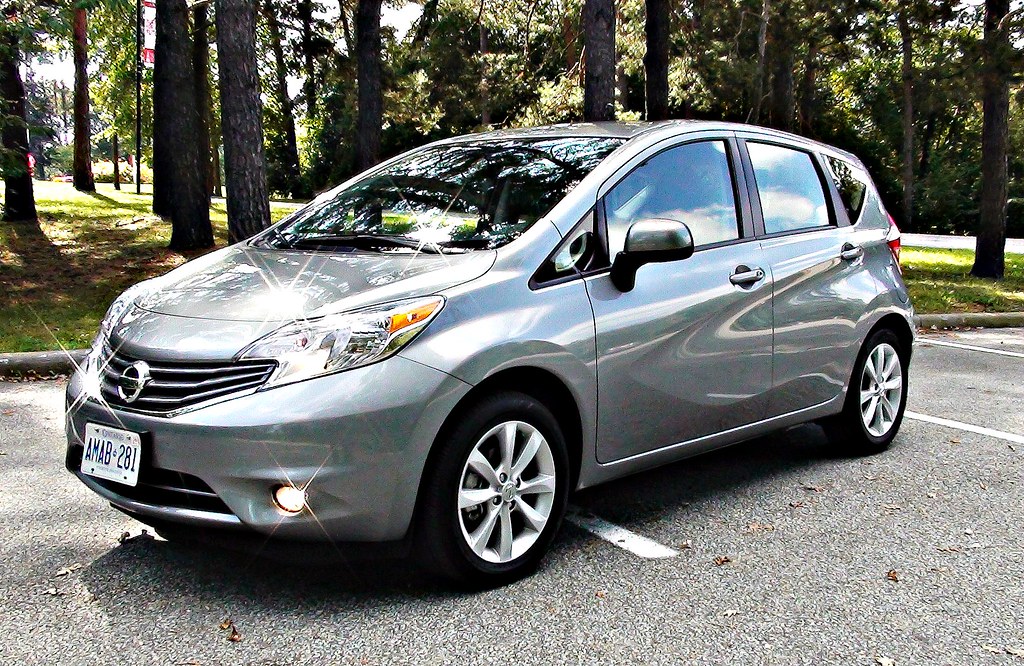
3. **Nissan Versa**The Nissan Versa continues to be a popular subcompact car, frequently appearing on shopping lists due to its attractive starting price of $16,680. However, despite its initial appeal, the Versa is another model that many buyers may come to regret owning in the long run. Even its range-topping trim, at $20,690 (MSRP), places it within a segment where other competitors might offer better overall value and fewer long-term headaches.
One significant concern for potential owners is the car’s depreciation rate. According to CarEdge, the Nissan Versa can depreciate by a substantial 39% in just five years. This considerable drop in value means that owners planning to sell their vehicle after a few years should not expect to recoup a significant portion of their initial investment, making it a less-than-ideal asset for resale.
Powering the Versa is a 122-hp 1.6-liter 4-cylinder engine. This engine, while adequate for basic transportation, often delivers sluggish acceleration, which can be frustrating in situations requiring quick bursts of speed, such as highway merging. Furthermore, this engine can become annoyingly loud, especially under hard acceleration, creating an intrusive cabin experience that detracts from driving comfort.
This noise issue is particularly pronounced when the engine is paired with the car’s optional continuously variable transmission (CVT). While CVTs are designed for smooth operation, the Versa’s unit has been observed to start developing problems after approximately 70,000 miles. Such issues can lead to costly repairs and diminished driving performance, a common point of regret for owners.
Luis Johnson, an automobile technician and founder of BatteryQuery, specifically cautions against the Nissan Versa. He states that while it “may be one of the most affordable cars on the market, it is also one of the least reliable.” Johnson further highlights its “transmission issues and frequent need for repairs,” emphasizing the potential for unexpected and substantial maintenance costs that can quickly negate any initial savings from its low purchase price.
Car Model Information: 2024 Nissan Versa 1.6 S
Categories: All set index articles, Articles with short description, CS1 Mexican Spanish-language sources (es-mx), CS1 Portuguese-language sources (pt), CS1 Spanish-language sources (es)
Summary: Nissan Versa is an automobile nameplate used by the Japanese manufacturer Nissan in the Americas for the following models:
According to a Nissan press release in 2008, “versa” is short for “versatile space” meant to imply the spaciousness of the interior and configurable cargo arrangements.
Get more information about: Nissan Versa
Buying a high-performing used car >>>
Brand: Nissan Model: Versa
Price: $19,444 Mileage: 7,761 mi.
Read more about: Owner’s Regret on Wheels: 10 Utility Vehicles Drivers Wished They Never Drove Off the Lot
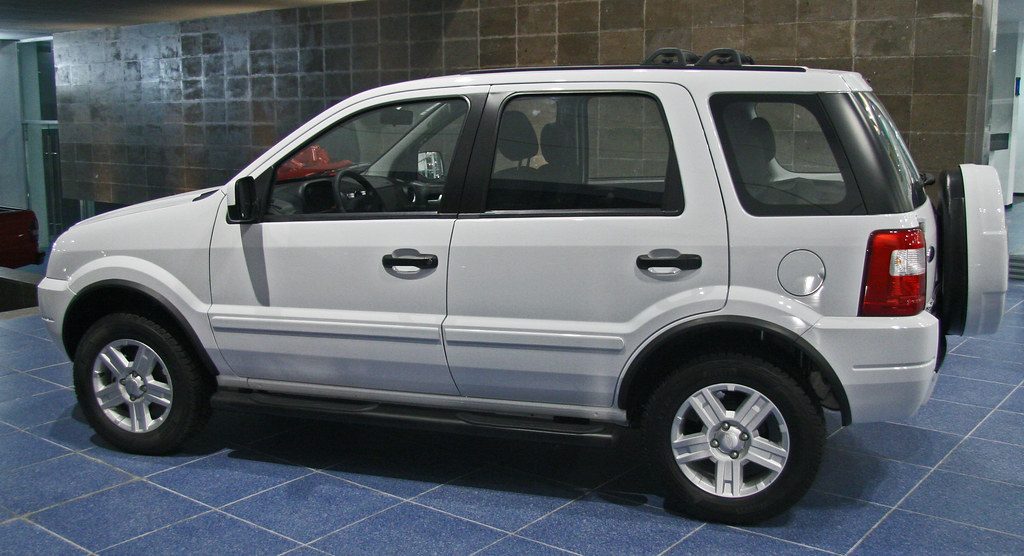
4. **Ford EcoSport**The Ford EcoSport, which was discontinued in 2022, was at one point Ford’s smallest vehicle and its foray into the subcompact crossover SUV segment. It initially garnered attention for its handsome styling, offering a more rugged aesthetic than traditional hatchbacks. Coupled with above-average cargo space—20.9 cubic feet behind the rear seats—and a pocket-friendly starting price of $23,335 in 2022, it presented itself as an appealing option for urban dwellers and small families.
However, the EcoSport suffered from significant issues primarily stemming from its poor build quality. This deficit translated directly into a choppy and jittery ride quality across most road surfaces. Drivers and passengers frequently experienced discomfort as the vehicle struggled to smoothly absorb bumps and imperfections, making longer journeys particularly tiring and less enjoyable than expected from a modern crossover.
Under the hood, the Ford EcoSport offered a choice of two engines. The base option was a turbocharged 123-hp three-cylinder engine, while an optional, naturally-aspirated 166-hp four-cylinder engine was also available. Both powerplants delivered underwhelming performance, struggling to provide robust acceleration or a sense of confident power. This lack of responsiveness often left drivers feeling that the car was underpowered for its segment.
Furthermore, both engine options delivered below-average fuel economy figures, which added to the overall cost of ownership. For a vehicle positioned as an economical choice, higher-than-expected fuel consumption, combined with the other compromises in ride quality and performance, became a consistent source of buyer’s remorse, undermining its initial appeal as a value proposition.
Car Model Information: 2021 Ford EcoSport SE
Name: Ford EcoSport
Manufacturer: Ford Motor Company
Production: 2003–2022
ModelYears: 2014–2022 (Europe) ,2018–2022 (North America)
Class: Subcompact crossover SUV
BodyStyle: Sport utility vehicle
Layout: Front-engine, front-wheel-drive layout
Categories: 2010s cars, 2020s cars, All-wheel-drive vehicles, All articles with bare URLs for citations, All articles with unsourced statements
Summary: The Ford EcoSport ( EK-oh-sport) is a subcompact crossover SUV (B-segment) manufactured by Ford between 2003 and 2022.
The first-generation model was developed and built in Brazil by Ford Brazil since 2003, at the Camaçari plant. The second-generation model was launched in 2012, which was assembled in factories in India, Thailand, Russia and Romania. The vehicle entered the European market in 2014 and the North American market in 2018. It was sold in both until its discontinuation after the 2022 model year. Throughout its existence, the EcoSport shared its platform with the Fiesta.
Get more information about: Ford EcoSport
Buying a high-performing used car >>>
Brand: Ford Model: EcoSport
Price: $12,200 Mileage: 96,879 mi.
Read more about: Walk Away Now: 10 SUVs That Are Guaranteed to Bring Buyer’s Remorse
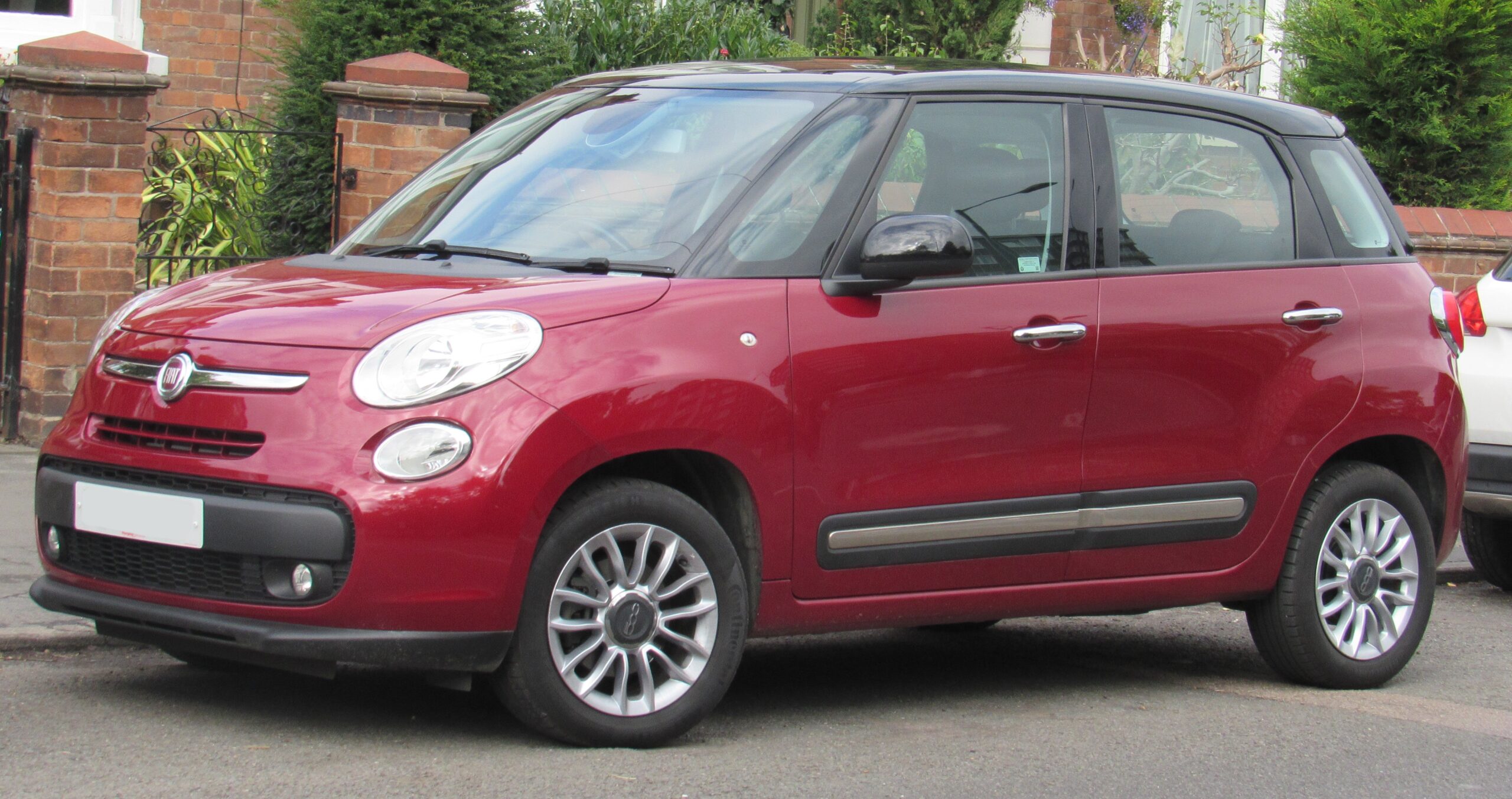
5. **Fiat 500L**The Fiat 500L, a larger interpretation of the iconic tiny Fiat 500, was discontinued in 2020 but continues to be a prevalent option in the U.S. used car market. Its persistent presence is largely due to its affordable price point, attracting buyers looking for a quirky and spacious compact at a low cost. However, this affordability often masks a deeper truth about the vehicle: a reputation for poor reliability and a series of recurring mechanical issues that can quickly turn a bargain into a financial burden.
Owners of the Fiat 500L have frequently reported a range of serious mechanical problems. According to Car Deal Canada, these issues notably include transmission failures, a critical and often expensive component to repair or replace. Beyond the gearbox, owners have also complained about poor interior fit and finish, indicating a lack of meticulous craftsmanship that can lead to rattles and an overall perception of cheapness in the cabin. Electrical system issues are another common fault, leading to unpredictable operation of various vehicle functions.
Driving the Fiat 500L further reveals its shortcomings in performance. It is propelled by a turbocharged 1.4-liter 4-cylinder engine, which, despite being turbocharged, delivers lackluster performance. Drivers often find acceleration to be uninspiring and the overall driving dynamics to be less engaging than anticipated. Moreover, its fuel economy figures, listed at 24 mpg city and 33 mpg highway, are considered below average for its class, adding to the ongoing operational costs.
Nick Musica, founder of Cash for Your Junk Car, strongly advises against purchasing the Fiat 500L. He details several critical reasons, stating, “Due to its propensity for mechanical issues, poor reliability and high depreciation rate, the Fiat 500L is generally regarded as a bad choice.” Musica specifically points out that “The gearbox, electrical system and engine have all been known to have problems, which can result in expensive repairs.” He further criticizes its “lack of refinement and poor build quality make for a less-than-pleasant driving experience,” concluding that its rapidly plummeting resale value makes it “a poor investment for those planning to sell it in the future.”
Car Model Information: 2014 FIAT 500L Trekking
Name: Fiat 500L
Manufacturer: Fiat
Production: 2012–2022
ModelYears: 2014–2020 (North America)
Assembly: Kragujevac
Class: Mini MPV
BodyStyle: hatchback
Layout: Front-engine, front-wheel drive layout
Platform: GM Fiat Small platform
Engine: Twinair engine,Turbocharger,Straight-twin engine
Transmission: Fiat Powertrain Technologies,Fiat Powertrain Technologies,Fiat Powertrain Technologies,Fiat Powertrain Technologies,Aisin AW
Wheelbase: 2612 mm
Abbr: on
Length: 4140 mm
Width: 1780 mm
Height: 1660 mm
Weight: 1245 kg
Related: Fiat Toro,Jeep Renegade,Fiat 500X,Fiat Tipo (2015)
Predecessor: Lancia Musa,Fiat Multipla,Chrysler PT Cruiser
Successor: Fiat 600 (2023)
Designer: Roberto Giolito
Sp: uk
Categories: 2010s cars, All articles with a promotional tone, All articles with dead external links, Articles with a promotional tone from October 2025, Articles with dead external links from April 2024
Summary: The Fiat 500L is a car which was manufactured by Fiat Serbia from 2012 to 2022 and marketed by Fiat globally. A five-door mini MPV based on a variant of the FCA Small Wide platform, it was initially only produced in a two-row, five-seater confugration, with a lengthened three-row, seven-seater version called the 500L Living introduced in 2013 for the European market. In 2017, the 500L received an intermediate facelift, with revised front and rear fascias along with In-car entertainment updates and interior revisions. By early 2018, production reached 500,000 units. The 500L was discontinued in the North American market after model year 2020.
The 500L uses Fiat’s Multiair variable valve timing engine technology and monovolume cab forward architecture: a packaging concept that prioritizes passenger and cargo volume. The 500L is noted for its high H-point seating, high roof, tall greenhouse, double A pillar, wide field of visibility—and its reconfigurable interior system marketed as Cargo Magic Space.
The 500L derives its name from Fiat’s widely known 500 models, including the original 1957 Fiat 500 and the current Fiat 500, introduced in 2007. Underscoring its increased length and overall size over other 500 variants, the suffix L denotes “large”, “light” and “loft”.
Get more information about: Fiat 500L
Buying a high-performing used car >>>
Brand: Fiat Model: 500L
Price: $5,995 Mileage: 95,059 mi.
Read more about: The Enduring Appeal: Why the 2025 Acura Integra Still Matters to Driving Enthusiasts and Everyday Owners

6. **Smart Fortwo**The Smart Fortwo is a distinctive two-seater microcar that was purposefully engineered for urban environments, prioritizing agility and ease of parking in congested cityscapes. While it is no longer officially sold in the U.S. market, it was once available at dealerships for prices as low as $14,590. Today, it can be acquired from used car dealers for an even more enticing figure, often less than $10,000, making it one of the cheapest options for car ownership.
However, its design, optimized for specific urban needs, inherently brings significant limitations for a broader range of drivers. As its name suggests, the Smart Fortwo can only comfortably accommodate two passengers. This restricted capacity is far from ideal for families, individuals who frequently carpool, or anyone needing to transport more than a single companion. This singular focus on two occupants drastically limits its versatility as a primary vehicle for many households.
Furthermore, the Smart Fortwo offers very limited space for cargo. With only 12.4 cubic feet of storage behind the seats, even moderate shopping trips or small pieces of luggage can quickly overwhelm its capacity. This lack of practical cargo room means owners often have to compromise on what they can carry, making it less suitable for road trips or even daily errands that require more than a minimal amount of hauling.
Adding to these practical drawbacks, the Smart Fortwo’s light construction contributes to a poor ride quality, particularly on rough or uneven roads. The minimal mass and short wheelbase mean that bumps and imperfections are often keenly felt within the cabin, leading to a jittery and uncomfortable experience. For those accustomed to the smoother ride of larger vehicles, the Fortwo’s ride can be a constant reminder of its size and construction compromises.
Car Model Information: 2016 smart ForTwo passion
Name: Smart Fortwo
Manufacturer: Daimler-Benz
Aka: Smart City-Coupé (1998–2002),Smart car (colloquially)
Production: 1998–2007 (MkI),2006–2014 (MkII),2014–2024 (MkIII)
Assembly: Hambach, Moselle
Class: City car,Microcar
BodyStyle: hatchback
Layout: Rear-engine, rear-wheel-drive layout,Rear-engine, rear-wheel-drive layout
Related: Smart Roadster,Smart Forfour
Successor: Smart 2
Categories: 2000s cars, 2010s cars, 2020s cars, All Wikipedia articles written in American English, All articles needing additional references
Summary: The Smart Fortwo (stylized as “smart fortwo”) is a two-seater city car manufactured and marketed by the Smart division of the Mercedes-Benz Group for model years 1998–2024, across three generations — each using a rear-engine, rear-wheel-drive layout and a one-box design.
The first generation was internally designated as the W450, launched at the 1998 Paris Motor Show. The second generation W451-build series was launched at the 2006 Bologna Motor Show. The third generation Fortwo (2014–2024) was internally designated as the C453 build series, and debuted globally on July 16, 2014, at the Tempodrom in Berlin along with a closely related four-door version, the Smart Forfour, co-developed and sharing the same platform and engines with the third-generation Renault Twingo.
Marketed in 46 countries worldwide, Fortwo production had surpassed 1.7 million units by early 2015.
The brand name Smart supposedly derives from its early history as a cooperative venture between Swatch and Mercedes: Swatch Mercedes ART. The Fortwo nameplate derives from its two-person seating capacity. Until 2002, the Fortwo had been marketed as the smart City-Coupé.
Get more information about: Smart Fortwo
Buying a high-performing used car >>>
Brand: Smart Model: Fortwo
Price: $8,995 Mileage: 89,202 mi.
Read more about: Unmasking Hidden Costs: 11 Subscriptions You Might Regret – Smart Alternatives for Savvy Savers
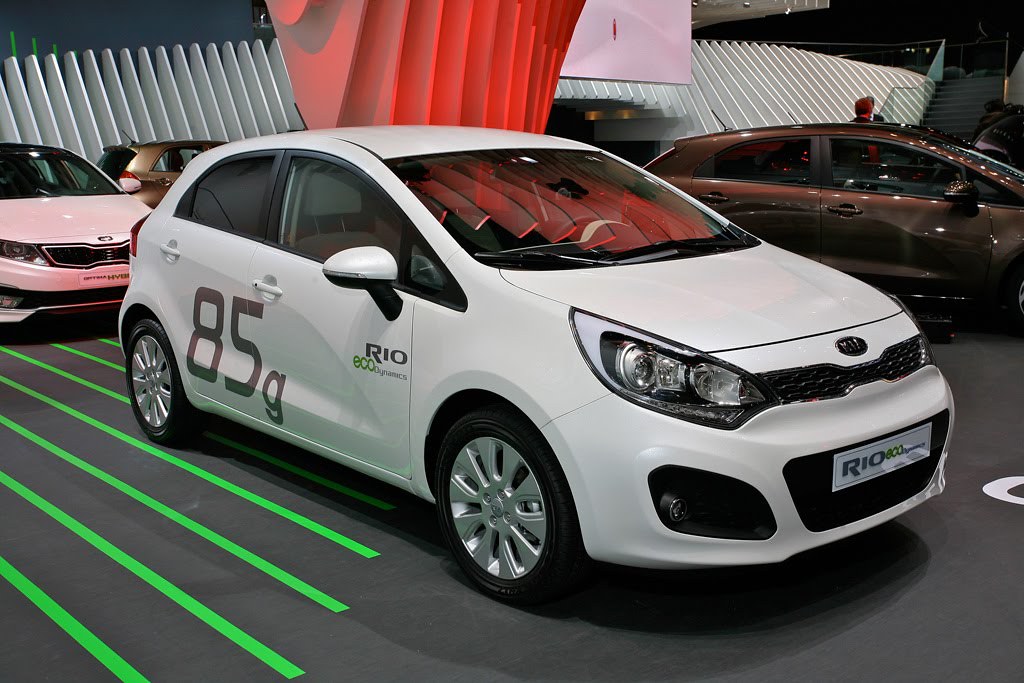
7. **Kia Rio**The Kia Rio subcompact car offers versatility by being available as both a 4-door sedan and a three- or four-door hatchback, starting at an accessible price of $16,750. For a vehicle in its class, the Kia Rio often boasts better build quality and commendable driving dynamics when compared to some of its direct competitors. This positions it as a potentially more refined and enjoyable option at first glance for buyers seeking an economical small car.
Despite these positive attributes, the Kia Rio frequently feels underpowered, which can be a point of frustration for many drivers. It is equipped with a 120-hp 1.6-liter 4-cylinder engine. While this engine is adequate for city driving, it often struggles to provide spirited acceleration, especially when merging onto highways or attempting overtakes. This lack of robust power can make the driving experience less confident and more strained in certain situations.
Another significant drawback, particularly in its base models, is the absence of crucial driver-assistance technologies that many of its rivals offer as standard equipment. Modern safety features, such as a lane-keep assist system, a forward collision warning system, and an automated emergency braking system, are increasingly becoming expected in new vehicles for enhanced safety and convenience. The Rio’s omission of these in its entry-level trims means buyers miss out on important protective layers without opting for more expensive packages.
Finally, for those considering the sedan variants of the Kia Rio, subpar cargo space presents a practical limitation. While hatchbacks typically offer more flexibility, the sedan models’ trunk capacity is often found to be less generous than ideal for families or individuals who frequently need to transport larger items or more luggage. This can lead to compromises in daily utility and convenience for owners expecting sufficient storage from their vehicle.
Continuing our exploration into compact cars that often prove to be more trouble than they’re worth, we now turn our attention to additional models that, despite their initial allure, frequently disappoint owners. These vehicles underscore the crucial lesson that a low price tag can often mask significant long-term costs, whether in the form of frequent repairs, frustrating driving dynamics, or rapid depreciation. Our aim is to equip consumers with the necessary insights to navigate the market wisely and avoid buyer’s remorse when seeking an economical compact.
Car Model Information: 2019 Kia Rio LX
Name: Kia Rio
Caption: Fourth generation Kia Rio
Manufacturer: Kia
Aka: Kia Pride (2005–2017),Kia K2 (China; 2011–2020)
Production: November 1999 – December 2023
ModelYears: 2001–2023 (North America)
BodyStyle: hatchback
Class: Subcompact car
Layout: Front-engine, front-wheel-drive layout
Predecessor: Kia Pride,Kia Avella
Successor: Kia K3 (BL7),Kia Soluto
Categories: 2000s cars, 2010s cars, Articles containing Korean-language text, Articles with short description, CS1 Croatian-language sources (hr)
Summary: The Kia Rio (Korean: 기아 리오) is a subcompact car manufactured by Kia from 1999 to 2023. Body styles have included a three and five-door hatchback and four-door sedan, equipped with inline-four gasoline and diesel engines, and front-wheel drive.
The Rio replaced the first generation Pride—a rebadged version of the Ford Festiva—and the Avella, a subcompact sold as a Ford in some markets. A second generation was introduced in 2005 in Europe and in 2006 in North America, sharing its platform with the Hyundai Accent, a subcompact manufactured by its sister Hyundai Motor Company in South Korea.
In August 2023, the K3 was introduced as its successor in several markets such as Mexico and the GCC countries.
Get more information about: Kia Rio
Buying a high-performing used car >>>
Brand: Kia Model: Rio
Price: $11,469 Mileage: 49,180 mi.
Read more about: More Than Just Speed: Unpacking Dealership Remorse with 15 Vehicles Owners Wish They Never Bought, Including Unexpected Sports Car Regrets
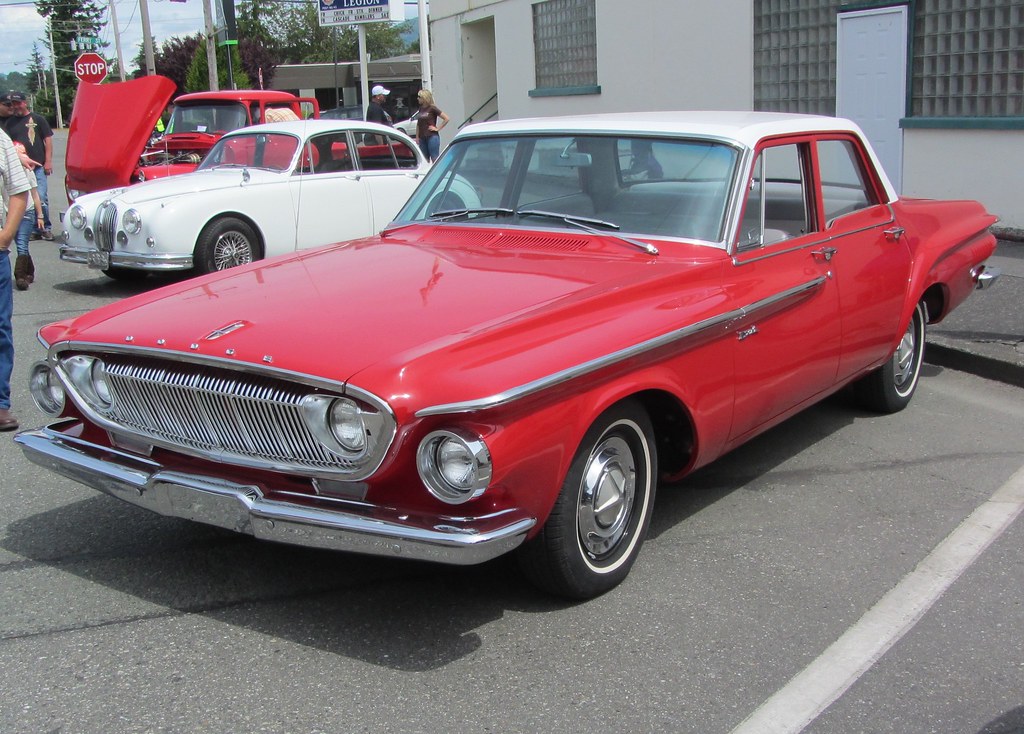
8. **Dodge Dart**The Dodge Dart, produced by Chrysler Group LLC from 2013 to 2016, was marketed as a compact sedan designed to be a smaller, sportier sibling to models like the Charger and Challenger. This branding often created an expectation of above-average performance among potential buyers, suggesting a vehicle that could deliver a dynamic driving experience. However, the reality of the Dart’s capabilities frequently fell short of these perceived promises.
Under the hood, the standard 160-hp 2.0-liter 4-cylinder engine proved to be underpowered, especially when compared to its rivals in the compact segment. This deficiency meant that drivers often found acceleration to be sluggish, struggling to keep pace or execute confident maneuvers, particularly on highways. While a 6-manual transmission was available, offering a slightly more engaging experience, the optional 6-speed automatic often felt even more unresponsive, contributing to a generally uninspired drive.
Beyond its performance shortcomings, the Dodge Dart was also plagued by several other drawbacks that diminished its appeal over time. Owners frequently reported lackluster handling and vague steering feedback, which translated into a less connected and less enjoyable driving experience. Furthermore, the vehicle offered poor fuel economy, increasing its running costs, and its cramped rear seats and below-average trunk space significantly compromised its practicality for families or individuals needing more room. Luis Johnson, an automobile technician and founder of BatteryQuery, specifically cautioned against purchasing the Dodge Dart, noting it “fell short in terms of reliability and durability” and was “known for its transmission issues and frequent recalls, making it a car that buyers may regret.”
Car Model Information: 2015 Dodge Dart SXT
Name: Dodge Dart
Caption: 1966 Dodge Dart GT 2-door hardtop
Manufacturer: Dodge
Production: 1959–1976 (US market)
ModelYears: 1960–1976 (US market)
Class: Full-size
Layout: FR layout
Predecessor: Dodge Coronet#Fourth generation (1957–1959)
Related: Plymouth Valiant,Chrysler Valiant,Dodge Phoenix
Successor: Dodge Aspen,Dodge Diplomat,Talbot Tagora
Categories: 1970s cars, All articles with unsourced statements, Articles with short description, Articles with unsourced statements from December 2023, Articles with unsourced statements from May 2025
Summary: The Dodge Dart is a line of passenger cars produced by Dodge from the 1959 to 1976 model years in North America, with production extended to later years in various other markets.
The production Dodge Dart was introduced as a lower-priced full-size model in 1960 and 1961, but became a mid-size car for one model year for 1962, and was then reduced to a compact for two generations, from 1963 to 1976.
Chrysler had first used ‘Dart’ name plates on two Italian styled show cars, in 1956 and 1957, before it became a Dodge model name. The Dart nameplate was resurrected for a Fiat-derived compact car that was introduced in 2012.
Get more information about: Dodge Dart
Buying a high-performing used car >>>
Brand: Dodge Model: Dart
Price: $9,995 Mileage: 143,082 mi.
Read more about: More Than Just Speed: Unpacking Dealership Remorse with 15 Vehicles Owners Wish They Never Bought, Including Unexpected Sports Car Regrets
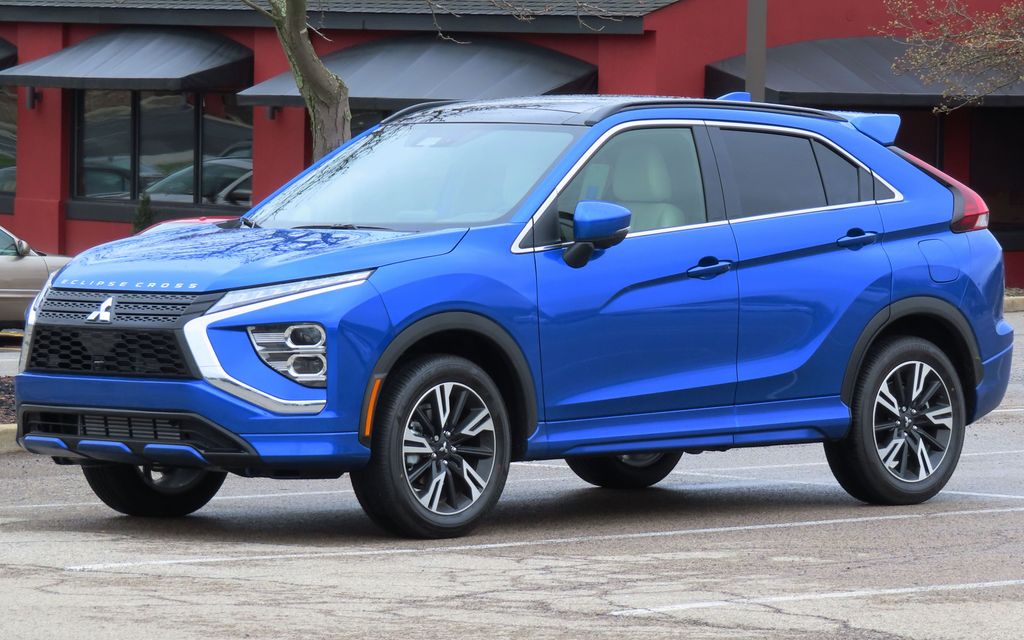
9. **Mitsubishi Eclipse Cross**The Mitsubishi Eclipse Cross represents the brand’s more recent entry into the compact crossover segment, initially attracting buyers with an accessible starting price of $26,545. Its name, evocative of the sporty Eclipse, might suggest a vehicle with off-road prowess or a performance-oriented character. However, this perception quickly gives way to the reality that the Eclipse Cross is predominantly best suited for paved roads in urban and suburban environments, rather than challenging terrains.
While its 1.5-liter turbo engine can feel adequately peppy when navigating city streets, offering sufficient responsiveness for day-to-day commuting within confined areas, this initial impression does not translate into overall efficiency. The vehicle delivers below-average fuel economy, with ratings of 25 mpg in the city and 28 mpg on the highway. For a compact crossover, these figures contribute to higher operational costs than many competitors, eroding the initial savings from its affordable purchase price.
A long-term review by Auto Express magazine highlighted several significant issues that contribute to buyer’s remorse with the Eclipse Cross. The report noted dismal ride quality, indicating that the suspension struggles to absorb road imperfections, leading to a less comfortable journey for occupants. Furthermore, the vehicle exhibited excessive body roll when cornering, diminishing driver confidence and the overall sense of stability. Compounding these dynamic flaws was a pervasive issue of poor interior quality, with materials and finishes that fell short of expectations for its segment, further detracting from the ownership experience.
Read more about: Driving Forward: A Detailed Guide to the 2025 Mid-Cycle Refreshes from Mitsubishi and Ford

10. **Land Rover Discovery Sport 2023**The Land Rover Discovery Sport 2023 often draws in prospective buyers with its undeniable stylish appearance and the strong, prestigious reputation of the Land Rover badge. This combination creates an initial impression of luxury and capability that is highly appealing. However, for many owners, the reality of living with the Discovery Sport quickly deviates from this glamorous first glance, frequently bringing more frustration and unexpected financial strain than pride once the novelty wears off. It serves as a stark reminder that a premium badge does not always equate to dependable engineering.
Among the most common and exasperating complaints are persistent electronic failures. Owners routinely report a litany of issues, including dashboard warning lights illuminating for no discernible reason, touchscreens that freeze and become unresponsive, malfunctioning navigation systems, and climate control systems that behave unpredictably. These frequent and often baffling electronic glitches make daily driving stressful and necessitate costly, time-consuming visits to service centers. When basic, everyday systems fail repeatedly, the trust a driver places in their vehicle inevitably disappears, leading to significant dissatisfaction.
Beyond the electronics, mechanical durability presents another significant disappointment for Discovery Sport owners. Specific engine problems, such as premature oil leaks and timing chain issues, have been reported to develop far earlier than one might expect from a premium vehicle. Transmission failures, encompassing harsh shifting or complete operational collapse, are also frequently cited concerns. Additionally, suspension components are often found to wear out too quickly, leading to noticeable noise, unwanted vibrations, and further expensive repairs. Even models equipped with the supposedly more advanced air suspension system are not immune, experiencing their own share of costly component failures, which is unacceptable for a vehicle marketed as capable and refined.
The interior quality of the Discovery Sport often fails to live up to its premium price tag. Numerous owners lament issues such as rattling trim pieces, leather upholstery that shows signs of fading prematurely, and misaligned interior panels. The buttons and switches, often tactile points of interaction, can feel cheap and flimsy, directly undermining the luxurious image that initially attracted buyers. This discrepancy between the expected premium feel and the actual everyday touchpoints makes it increasingly difficult for owners to justify the high cost of the vehicle.
Compounding these issues, the real-world fuel consumption of the Discovery Sport frequently proves to be considerably worse than its official ratings suggest, forcing owners into more frequent and expensive trips to the fuel station. When this elevated running cost is combined with its steep depreciation rate and the very high service expenses typical of a luxury marque with known reliability issues, the overall ownership experience becomes financially draining. For a significant number of buyers, the Discovery Sport 2023 ultimately becomes a painful and expensive lesson in prioritizing brand perception over proven reliability.
Car Model Information: 2020 Jeep Wrangler Sport
Name: Land Rover Discovery Sport
Manufacturer: Jaguar Land Rover
Production: 2014–present
ModelCode: L550
Assembly: Jaguar Land Rover Halewood,Changshu,Itatiaia,Pune
Designer: Gerry McGovern
Platform: Jaguar Land Rover car platforms#D8
Related: Range Rover Evoque,Jaguar E-Pace,Tata Harrier
Engine: ubl
Motor: ubl
Transmission: ubl
Wheelbase: Convert
Length: Convert
Width: Convert
Height: Convert
Weight: Convert
Sp: uk
Class: Compact crossover SUV#Luxury vehicles
BodyStyle: SUV
Layout: unbulleted list
Predecessor: Land Rover Freelander
Categories: 2020s cars, All-wheel-drive vehicles, All Wikipedia articles written in British English, Articles with short description, CS1: unfit URL
Summary: The Land Rover Discovery Sport (internal code L550) is a compact luxury crossover SUV produced by British automotive company Jaguar Land Rover since 2014, under their Land Rover marque, and since 2017 their best-selling model.
Introduced in late 2014, it replaces the Freelander in a revised Land Rover range of vehicles, with Discovery joining Range Rover as a sub-brand. Contrary to its predecessor, the slightly larger car is also available in a seven seat layout.
The pre-facelift Discovery Sport is based on the JLR D8/LR-MS platform, customised for off-road applications, and is powered by a range of four cylinder petrol and diesel engines. It is the first Discovery built with a unibody structure.
Land Rover described the facelifted Discovery Sport as being based on the JLR PTA platform, a rebrand of the D8. It is also used by the Jaguar E-Pace and L551 version of Range Rover Evoque.
Get more information about: Land Rover Discovery Sport
Buying a high-performing used car >>>
Brand: Land Rover Model: Discovery Sport
Price: $25,000 Mileage: 54,707 mi.
Read more about: Driving Dreams: The Deep Dive into Why Old Land Rover Defenders and Toyota Land Cruisers Are Worth a Fortune Today
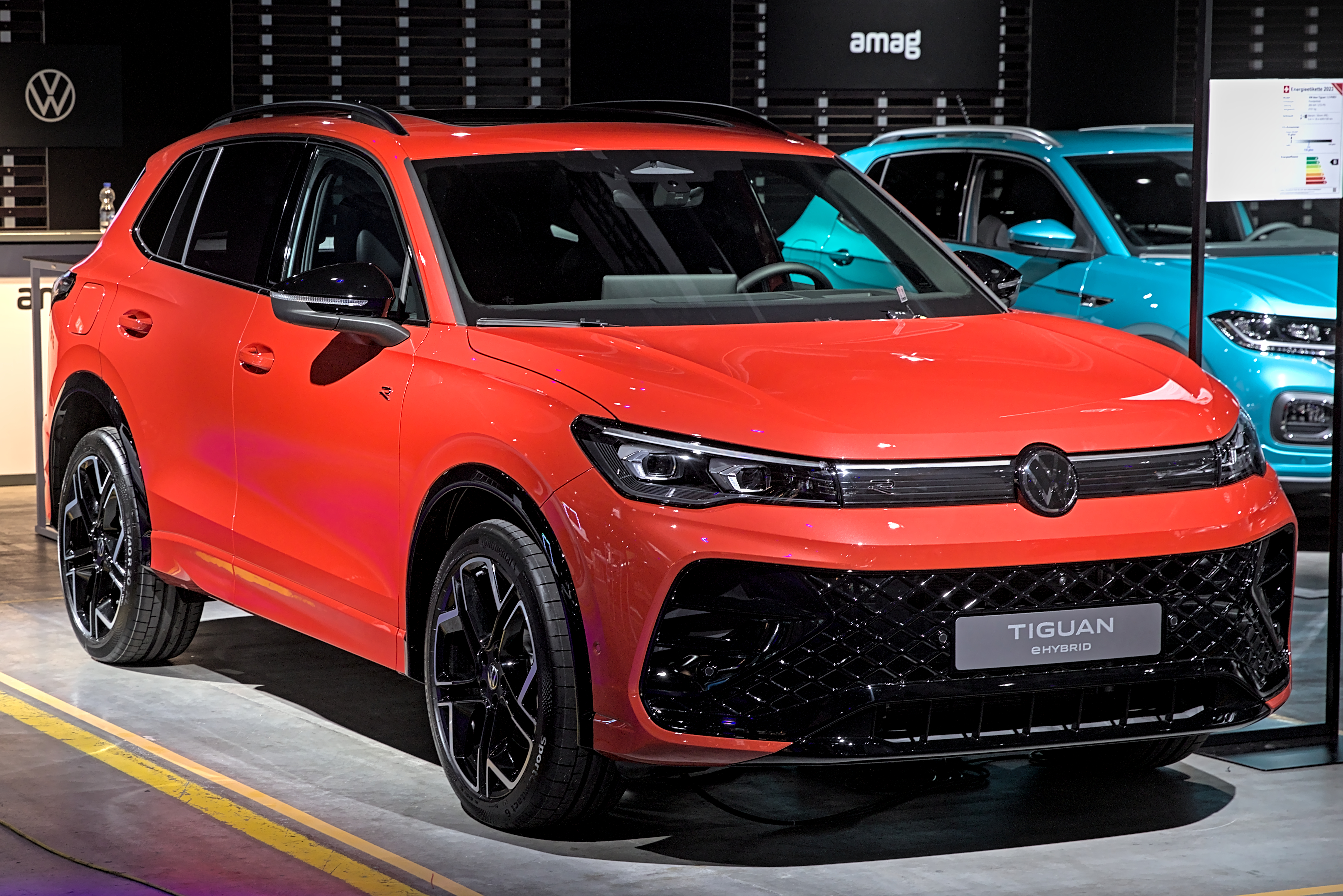
11. **Volkswagen Tiguan 2023**The Volkswagen Tiguan 2023, with its sleek styling and the implied quality of German engineering, initially presents itself as a promising choice in the competitive compact SUV segment. Many consumers are drawn to its sophisticated aesthetic and the brand’s reputation for precision. However, for a notable number of owners, this initial promise quickly begins to fade once the vehicle is subjected to real-world use. The Tiguan often struggles to consistently deliver the reliability and robust quality that buyers expect from its lineage, leading to a profound sense of frustration rather than the anticipated satisfaction.
Electrical faults are frequently cited as a major source of complaint, creating persistent headaches for Tiguan owners. Drivers report the perplexing appearance of various warning lights without clear explanation, sudden failures of critical sensors, and instances where entire systems simply stop working without any prior warning. This leads to frequent and inconvenient visits to service centers for problems that are often difficult for technicians to diagnose accurately or fix permanently. Infotainment screens may freeze, power windows can refuse to operate, and door locks sometimes behave unpredictably, all contributing to an ownership experience that is both stressful and unexpectedly expensive, severely eroding confidence in the vehicle’s fundamental reliability.
Engine issues further deepen the disappointment for many Tiguan owners. While the turbocharged engine can feel lively and responsive when new, its long-term durability is often questioned. Some units are known to consume oil excessively, a costly and inconvenient problem, while others suffer from premature failures of the turbochargers themselves or from carbon buildup that significantly impairs performance over time. Repairs for these engine-related problems are not only complex but also expensive, leaving many owners feeling anxious about potential breakdowns, especially once the factory warranty periods expire, turning a once-promising engine into a source of constant worry.
The performance of the transmission also adds a layer of frustration to the Tiguan ownership experience. The dual-clutch gearbox, which is designed to provide smooth and rapid gear changes, frequently falls short in practical application. In real-world driving, especially at low speeds or in stop-and-go traffic, it is often reported to jerk or hesitate, making for a less refined and somewhat unpredictable driving experience. Some drivers describe the transmission’s behavior as inconsistent and tiring, particularly in congested urban environments. When these sophisticated systems eventually fail, the replacement costs can be prohibitively shocking, making a problematic transmission a significant financial liability.
Furthermore, the interior quality of the Tiguan often does little to redeem the vehicle. While visually appealing in brochures, the materials used within the cabin often feel less refined and durable than expected for a Volkswagen, particularly given its price point. Owners report that seats can lose their initial comfort and support relatively quickly, and various trim pieces may not hold up to everyday wear as well as desired. When combined with the high costs associated with its frequent repairs and a notably low resale value, the Tiguan 2023 leaves many owners regretting what initially seemed like a sound and intelligent investment, illustrating how perceived quality can starkly differ from actual long-term reliability.
Car Model Information: 2023 Volkswagen Tiguan 2.0T SE R-Line Black
Name: Volkswagen Tiguan
Manufacturer: Volkswagen
Layout: 4motion
Class: Compact crossover SUV
BodyStyle: Sport utility vehicle
Chassis: Unibody
Production: 2007–present
ModelYears: 2009–present (North America)
Categories: 2010s cars, 2020s cars, All-wheel-drive vehicles, All Wikipedia articles written in British English, Articles with short description
Summary: The Volkswagen Tiguan (German pronunciation: [ˈfɔlksˌvaːɡn̩ ˈtiːɡu̯aːn]) is a sport utility vehicle produced by German manufacturer Volkswagen since 2007, sitting between the smaller T-Roc and the larger Touareg in the company’s crossover SUV range. The first generation was based on the PQ46 platform, while the second generation, released in 2016, utilizes the Volkswagen Group MQB A2 platform. It is generally considered to be a medium-sized SUV in Europe, while in North America it is considered to be a compact crossover SUV.
The name Tiguan is a portmanteau of the German words Tiger (“tiger”) and Leguan (“iguana”) and won a naming contest by German car magazine publisher Auto Bild—from a field of names that also included Namib, Rockton, Samun and Nanuk.
As of the spring of 2020, six million units had been sold worldwide, with 910,926 units being manufactured in 2019 alone, making the Tiguan the best-selling car overall in the Volkswagen Group. It was also the best-selling SUV in Europe.
Get more information about: Volkswagen Tiguan
Buying a high-performing used car >>>
Brand: Volkswagen Model: Tiguan
Price: $24,537 Mileage: 24,700 mi.
Read more about: Rust Resistance Rundown: Identifying the Vehicles That Conquer and Crumble in the American Salt Belt
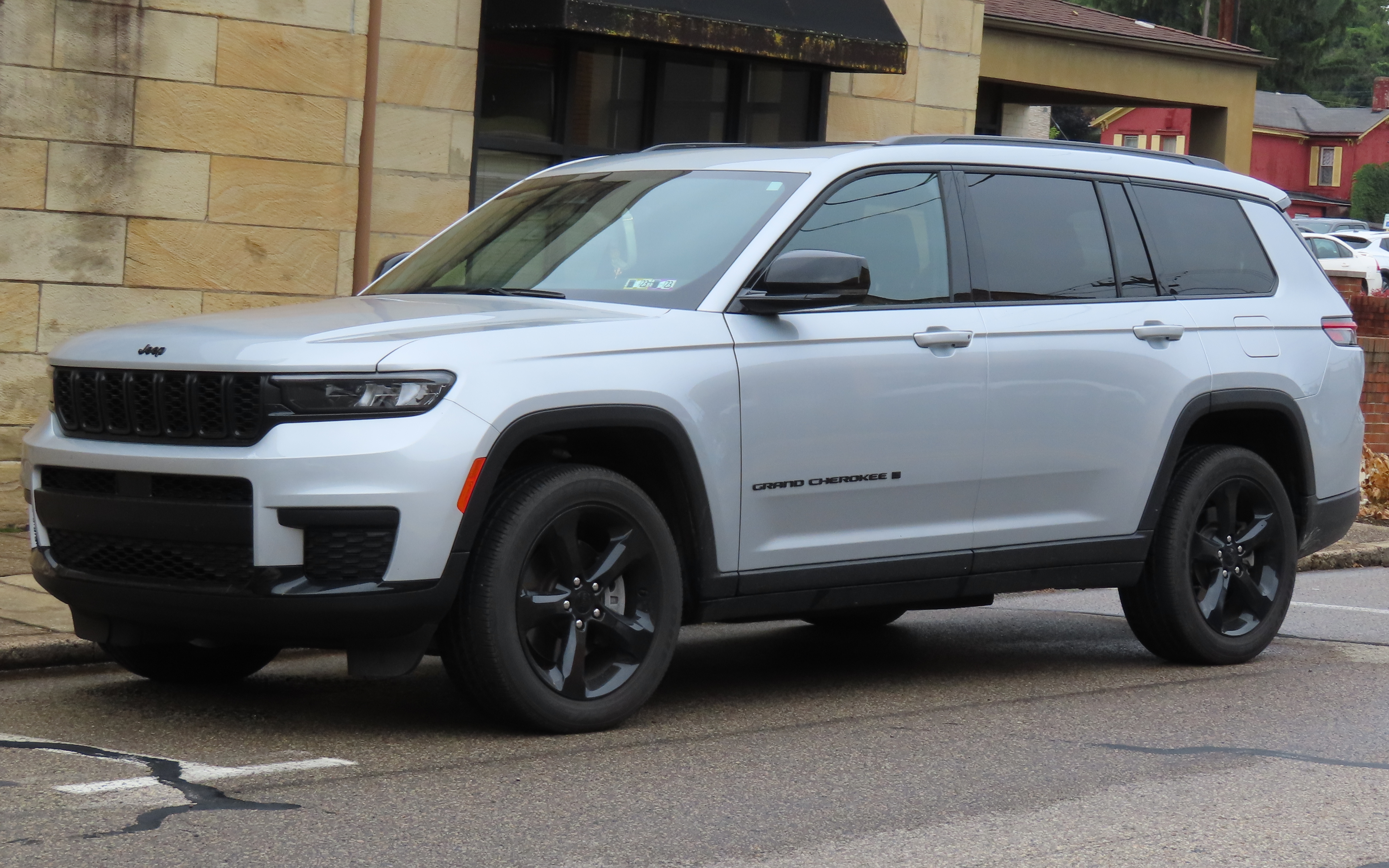
12. **Jeep Cherokee 2023**The Jeep Cherokee 2023 carries the iconic Jeep name, suggesting a vehicle built for toughness, reliability, and off-road capability—qualities that many American SUV buyers anticipate. However, this model frequently struggles with a litany of problems that frustrate owners, often starting from the very first year of ownership. Instead of experiencing the expected rugged dependability, many buyers find themselves grappling with repeated repairs, unpredictable performance, and an overall disappointing build quality that tarnishes the brand’s reputation.
The nine-speed automatic transmission stands out as a primary source of widespread trouble for the Jeep Cherokee. This critical component is notorious for its unpredictable shifting behavior, which includes noticeable hesitation during acceleration and, in more severe cases, complete failure. Even after numerous software updates or warranty-covered repairs, a significant number of these units continue to perform poorly, never achieving the smooth and consistent operation expected. Drivers find it exceedingly difficult to trust a vehicle whose fundamental ability to deliver power to the wheels is so unreliable, transforming daily driving into an exercise in patience rather than confident command.
Electrical problems contribute another layer of significant frustration to the Cherokee’s ownership experience. Owners report a variety of unsettling issues, such as infotainment screens freezing or restarting spontaneously during use, critical warning lights illuminating on the dashboard for no apparent reason, and safety systems deactivating unexpectedly. There are even accounts of drained batteries overnight, indicating deeper electrical glitches. When such electronic systems fail this frequently, the entire vehicle feels profoundly unreliable, a particularly critical flaw given how heavily modern vehicles depend on these components for basic operation, comfort, and safety features.
The build quality of the Jeep Cherokee also frequently fails to justify its price tag. The interior often feels cheaply assembled, with panels that are prone to rattling and materials that show signs of wear and tear far too quickly. Exterior paint can chip easily, exposed exterior trim pieces may fade prematurely, and seat cushions have been observed to lose their support within a relatively short period of ownership. While the Cherokee may possess an attractive aesthetic when new, its accelerated aging process compared to most rivals quickly exposes a lack of durable construction.
Furthermore, fuel economy for the Cherokee often disappoints, with many drivers reporting real-world consumption figures significantly higher than official estimates, thereby noticeably increasing ongoing running costs. When these factors—a problematic transmission, pervasive electrical issues, subpar build quality, and higher fuel expenses—are combined with a consistently poor resale value and the inconvenience of frequent service visits, the Jeep Cherokee 2023 often leaves many owners feeling trapped in what becomes an expensive mistake, rather than enjoying the dependable transportation they initially sought.
Car Model Information: 2020 Jeep Cherokee Latitude Plus
Name: Jeep Cherokee
Caption: Fifth generation (KL)
Manufacturer: Jeep
Aka: Jeep Liberty
ModelYears: unbulleted list
Class: unbulleted list
Layout: unbulleted list
Chassis: unbulleted list
Categories: All-wheel-drive vehicles, Anti-Indigenous racism in the United States, Articles with short description, Compact sport utility vehicles, Crossover sport utility vehicles
Summary: The Jeep Cherokee is a line of sport utility vehicles (SUV) manufactured and marketed by Jeep over six generations. Marketed initially as a variant of the Jeep Wagoneer (SJ), the Cherokee has evolved from a full-size station wagon (before the SUV description came into use) to one of the first compact SUVs and into its latest generation as a crossover SUV.
Named after the Cherokee tribe of Native Americans in the United States, Jeep has used the nameplate in some capacity since late 1973 when American Motors Corporation (AMC) introduced the 1974 model year line.
Production of the Cherokee ended in February 2023. The Cherokee nameplate has since been used by the Grand Cherokee and its extended version, the Grand Cherokee L.
Get more information about: Jeep Cherokee
Buying a high-performing used car >>>
Brand: Jeep Model: Cherokee
Price: $14,980 Mileage: 96,780 mi.
Read more about: Owner’s Regret on Wheels: 10 Utility Vehicles Drivers Wished They Never Drove Off the Lot

13. **Alfa Romeo Giulia 2023**The Alfa Romeo Giulia 2023 commands immediate attention with its undeniably stunning aesthetics. Its design embodies the elegance and captivating charm that historically draw car enthusiasts to Italian automotive brands. The vehicle boasts graceful lines, perfectly balanced proportions, and a badge that carries a distinct sense of prestige, promising a unique and passionate driving experience. However, beneath this beautiful exterior lies a reality that, for many buyers, quickly transforms initial ownership excitement into profound frustration. All too often, owners discover belatedly that the Giulia’s allure fades rapidly once persistent reliability and complex maintenance issues begin to emerge.
Mechanical troubles tend to manifest surprisingly early in the Giulia’s ownership lifecycle for many individuals. Drivers report the unwelcome appearance of various warning lights on the dashboard for no clear or immediate reason, signaling underlying issues. Electrical faults are common, leading to the unexpected disabling of basic yet crucial functions such as lighting systems, various sensors, or the entire infotainment setup. Engines, which are meant to be the heart of its performance, sometimes develop oil leaks or even more serious, costly failures. Furthermore, suspension components and brake systems are observed to wear out faster than anticipated, requiring premature replacements. These frequent and diverse issues make the car feel inherently unreliable, even when relatively new, forcing owners to allocate significant time and financial resources to address problems that should not be present in a premium vehicle.
Maintenance for the Alfa Romeo Giulia quickly becomes a constant source of stress and logistical challenges. Spare parts often need to be specifically imported from Italy, a process that invariably leads to long and frustrating waiting periods, leaving owners without their vehicles for extended durations. When these specialized parts finally do arrive, their costs are typically quite high, compounded by steep labor charges at authorized workshops due to the vehicle’s complexity. Adding to the burden, independent garages are frequently hesitant to undertake repairs on the Giulia, largely due to limited access to the necessary diagnostic tools and the often-complicated repair procedures involved. This already challenging ownership experience is further exacerbated by Alfa Romeo’s notably small dealer network, which means many owners must travel significant distances for routine servicing or critical repairs, adding considerable inconvenience and expense to an already taxing situation.
The build quality of the Giulia often fails to genuinely justify its high price point, further contributing to owner dissatisfaction. Interior materials, while initially appealing, frequently show signs of wear and tear quickly. Buttons and switches often feel fragile and lack the robust tactile feedback expected from a luxury car, while paint durability can disappoint, showing chips and imperfections prematurely. When these quality concerns are combined with a consistently poor resale value and notably high fuel consumption, the Alfa Romeo Giulia 2023 unfortunately teaches a painful and expensive lesson about the potential pitfalls of prioritizing aesthetic beauty and brand prestige over proven dependability and practical ownership considerations.
Car Model Information: 2020 Jeep Wrangler Sport
Name: Alfa Romeo Giulia (Type 105)
Caption: Alfa Romeo Giulia Super
Manufacturer: Alfa Romeo
Production: 1962–1978
Assembly: Portello (district of Milan),Alfa Romeo Portello Plant,Milan
Designer: Giuseppe Scarnati
Class: Compact executive car
BodyStyle: notchback,Sedan (car)
Layout: Front-engine, rear-wheel-drive layout
Related: Alfa Romeo 105/115 Series Coupés,Alfa Romeo 1750 Berlina,Alfa Romeo Gran Sport Quattroruote,Alfa Romeo Spider
Engine: Alfa Romeo Twin Cam engine,1.6 L Twin Cam I4 (petrol),Perkins Engines
Transmission: Manual transmission
Wheelbase: 2510 mm
Abbr: on
Length: 4140 mm
Width: 1560 mm
Height: 1430 mm
Weight: convert
Predecessor: Alfa Romeo Giulietta (750/101)
Successor: Alfa Romeo Giulietta (116)
Sp: uk
Categories: 1970s cars, Alfa Romeo vehicles, Articles with short description, CS1 Italian-language sources (it), Cars introduced in 1962
Summary: Alfa Romeo Giulia (Italian pronunciation: [ˈdʒuːlja]) is the name of three not directly related model (line)s from Italian carmaker Alfa Romeo. The first were the four-door Type 105 entry-level compact executive sports sedans produced from 1962 to 1978; the second are the updated (mainly up-engined) Spider, Sprint, and Sprint Speciale Alfa Giuliettas, and in 2015, Alfa Romeo revived the Giulia name, again for a compact executive car (type 952).
Alfa Romeo was one of the first mainstream manufacturers to put a powerful engine in a light-weight 1 tonne (2,205 lb) four-door car for mass production. The Type 105 Giulia was equipped with a light alloy twin overhead camshaft four-cylinder engine similar to that of the earlier Giulietta (750/101) range, available in 1.3-litre (1,290 cc) and 1.6-litre (1,570 cc) versions. Various configurations of carburetors and tuning produced power outputs from about 80 to about 110 bhp (55 to 75 kW), coupled in most cases to 5-speed manual transmission.
Giulia sedans were noted for lively handling and impressive acceleration among small European four-door sedans of their era, especially considering modest engine sizes offered. The popular Super version with the twin carburettor 1.6 litre engine had a top speed of 170 km/h (106 mph) and accelerated from 0 to 100 km/h (62 mph) in about 12 seconds, better than many sports cars of the late 1960s and early 1970s. When leaving the factory all variations of the Giulia originally fitted either Pirelli Cinturato 165HR14 or 155HR15 tyres (CA67).
The styling of the three-box four-door sedan was somewhat wanting, with its three main volumes all truly square and boxy, softened only by detailing of the front and bonnet, roofline, and boot. Using a wind tunnel during development helped designers to find a remarkably aerodynamic shape with a drag coefficient of Cd=0.34, particularly low for a saloon of the era.
The Giulia Spider was succeeded by the Alfa Romeo Spider (105/115) in 1966.
Get more information about: Alfa Romeo Giulia
Buying a high-performing used car >>>
Brand: Alfa Romeo Model: Giulia
Price: $25,000 Mileage: 54,707 mi.
Read more about: Beyond the Commute: 14 Cars That Redefine Driving Fun and Handling Perfection for Enthusiasts

14. **Fiat 500X 2023**The Fiat 500X 2023 immediately captures attention with its distinctively stylish and nostalgic appearance, drawing heavily on the iconic Fiat 500 heritage but scaled up for a crossover appeal. Many potential owners are initially attracted to its charming looks and compact size, envisioning a fashionable and practical urban companion. However, this appealing first impression often begins to fade once daily use commences, revealing a vehicle whose underlying character is defined by weak reliability, inconsistent performance, and surprisingly limited practicality, which its aesthetics ultimately cannot compensate for.
The initial excitement of owning a 500X frequently gives way to irritation as a range of technical faults invariably begins to appear. The vehicle has gained a reputation for frequent electrical troubles, with dashboard warning lights often illuminating without any clear or logical reason, indicating underlying system glitches. Owners report instances where important features cease to function unexpectedly, adding to the frustration. Drivers also commonly experience rough engine behavior, unpredictable acceleration, and unsettling moments of power loss, which can make the car feel both unsafe and tiring to drive, diminishing confidence in its mechanical integrity.
Gearbox problems, often manifesting as delayed responses during acceleration and harsh, abrupt shifts, tend to appear earlier in the 500X’s life than one would expect. These issues disrupt the driving experience, making it less smooth and refined. Furthermore, components related to the suspension system and the air conditioning unit often tend to require premature repairs, adding to the financial burden and inconvenience of ownership. The small turbocharged engine, despite its forced induction, frequently feels strained and underpowered, particularly during routine driving tasks, struggling to deliver adequate performance for many buyers. This overall lack of refinement and the persistent mechanical and electrical issues significantly detract from the daily utility and enjoyment of the Fiat 500X, solidifying its place as a vehicle that many owners come to regret.
Car Model Information: 2016 FIAT 500X Trekking
Name: Fiat 500X
Alt: White car paked at roadside with a backdrop of shops
Manufacturer: Fiat
Production: 2014–2024
ModelYears: 2015–2024
Assembly: Italy
Designer: Roberto Giolito
Class: Subcompact crossover SUV
BodyStyle: Sport utility vehicle
Layout: Front-engine, front-wheel-drive layout
Platform: SCCS platform#SUSW
Related: Jeep Renegade,Fiat 500L,Jeep Compass#MP/552,Fiat Toro
Engine: unbulleted list
Transmission: Fiat Powertrain Technologies,6-speed FPT C635 manual,FPT C635 DDCT transmission,Chrysler (brand)
Wheelbase: 2570 mm
Abbr: on
Length: 4248 mm
Width: 1786 mm
Height: convert
Weight: convert
Predecessor: Fiat Sedici
Successor: Fiat 600 (2023)
Sp: uk
Battery: 0.8 kWh battery (Mild hybrid)
Drivetrain: Mild Hybrid
Categories: 2010s cars, All-wheel-drive vehicles, All Wikipedia articles written in British English, Articles with short description, Cars discontinued in 2024
Summary: The Fiat 500X (Type 334) is a subcompact crossover SUV manufactured and marketed by Stellantis (formerly Fiat Chrysler Automobiles), since its debut at the 2014 Paris Motor Show. Following the 500L, and produced from 2014 (from 2016 model year for US), the 500X is closely related to the Jeep Renegade. Both are manufactured at FCA’s SATA Plant in Melfi, Italy.
Get more information about: Fiat 500X
Buying a high-performing used car >>>
Brand: Fiat Model: 500X
Price: $8,000 Mileage: 92,393 mi.
Read more about: Beyond the Showroom Shine: 15 Car Brands and Models Driving Experts Would Never Buy – And Why You Shouldn’t Either
The journey through these 14 compact cars, from their initial tempting price points to the myriad of disappointments they often bring, serves as a crucial reminder for anyone considering a new vehicle. While the allure of affordability is strong, true value lies in long-term satisfaction—reliability, manageable maintenance, and a pleasant driving experience. These vehicles, despite their outward appeal or initial cost savings, underscore the importance of looking beyond the sticker price and delving into the detailed ownership realities. Making an informed decision, based on objective analysis rather than superficial attraction, is the best defense against buyer’s remorse, ensuring your car becomes a trusted companion, not a frustrating burden.

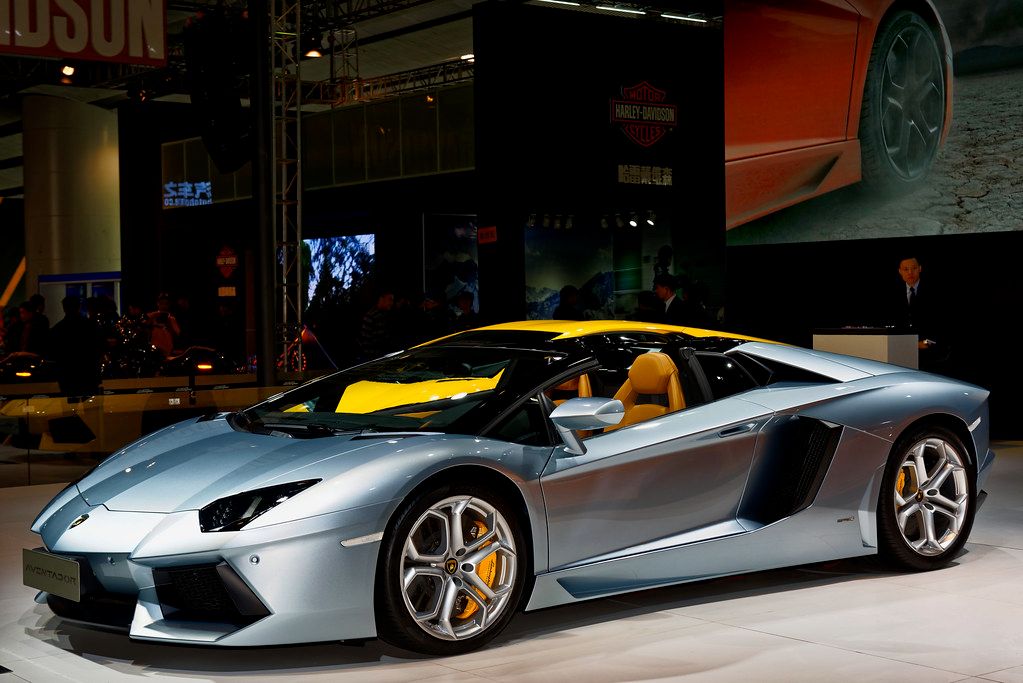
:quality(85):upscale()/2018/08/14/714/n/24155406/b5fc8acc5b72fe9de893b8.76519217_.jpg)
